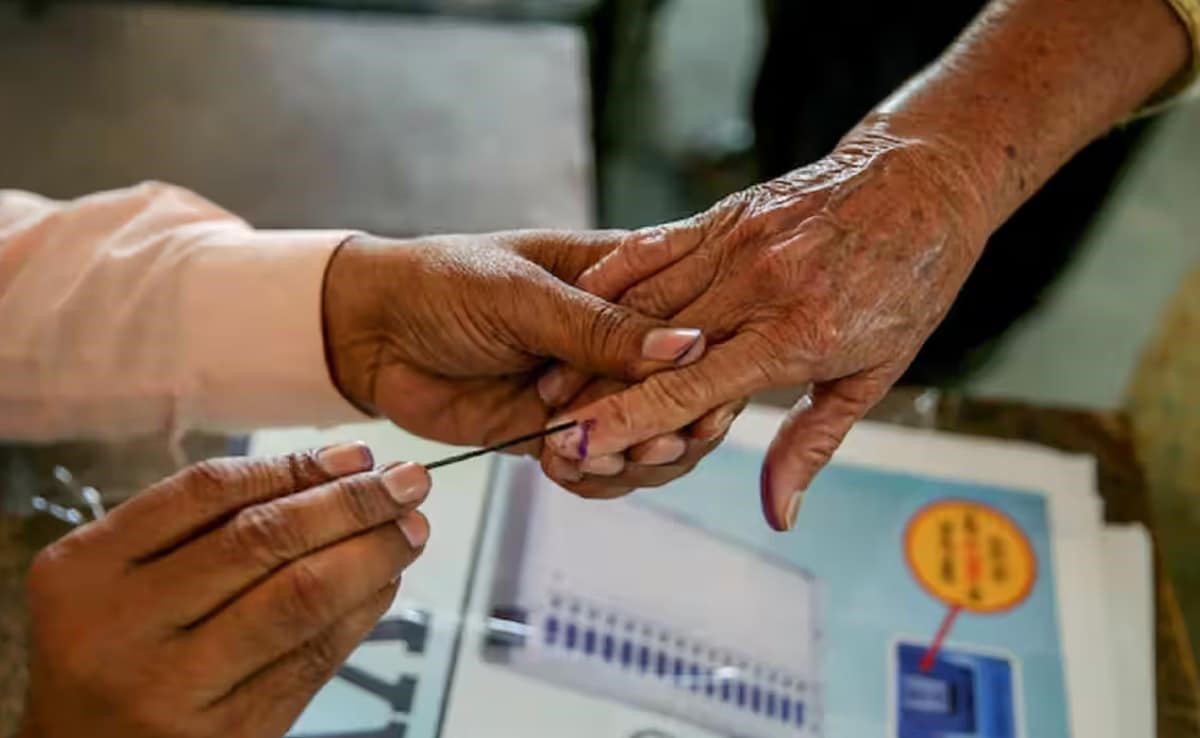Description

Disclaimer: Copyright infringement not intended.
Context
- The ECI has, for the first time in the history of the Lok Sabha elections, extended its ‘vote-from-home’ facility to Persons with Disabilities (PwD) and senior citizens aged 85 and above.
Eligibility Criteria and Amendments
Age and Disability Considerations:
- The voting experience is significantly influenced by age and disability, necessitating tailored measures for inclusivity.
- Efforts thus far have primarily focused on enhancing accessibility within polling sites, including the installation of ramps, provision of separate queues, availability of wheelchairs, and designated parking facilities for persons with disabilities and senior citizens.
- An important amendment to the electoral process includes the introduction of the postal ballot-home voting facility, which now extends to senior citizens and candidates with disabilities.
- However, eligibility for this facility requires that the candidate's benchmark disability be not less than 40% as certified by the relevant authority.

Expansion of Voting Options
Vote-from-Home (VfH) Facility:
- Recognizing the challenges faced by senior citizens and persons with disabilities in physically accessing polling stations, the Election Commission of India (ECI) has introduced the Vote-from-Home (VfH) facility.
- This facility allows eligible voters to cast their ballots from the comfort of their homes, providing an alternative to traditional in-person voting.
- Eligible voters who opt for VfH are not permitted to vote directly at polling stations on polling day, thereby ensuring the integrity of the voting process.
Implementation and Impact
Trial and Expansion:
- The VfH facility has been trialed during previous Assembly elections and has now been expanded for use during Lok Sabha elections.
- Furthermore, the upper age limit for elderly voters has been raised from 80 to 85 years, reflecting a commitment to inclusivity.
- These measures have had a positive impact on voter turnout and accessibility, benefiting a substantial number of persons with disabilities and elderly voters
Eligibility and Procedure
Availing the Vote-from-Home Facility:
- To avail of the VfH facility, eligible voters must submit Form 12D to the Assistant Returning Officer (ARO), indicating their inability to visit a polling station.
- However, logistical challenges arise in the distribution and submission of Form 12D, particularly for persons with disabilities, who may face difficulties in accessing relevant documentation.
- Once the form is filed, the postal ballot voting process is overseen by polling officials, who visit the voter's home to facilitate the voting process.
Logistics and Challenges
Operational Hurdles:
- Despite the benefits of the VfH facility, operational challenges remain, including coordinating requests, scheduling visits, and ensuring the smooth movement of personnel and equipment.
- Extensive awareness campaigns among both voters and polling officers are crucial to address these challenges and ensure that eligible individuals are aware of and able to access the VfH facility.
- Past elections have seen instances of missed visits and a lack of awareness among voters, underscoring the need for ongoing efforts to improve accessibility and awareness.
Further Initiatives for Inclusive Elections
Remote Voting for Domestic Migrants:
- In addition to the VfH facility, the government is exploring the implementation of remote voting options for domestic migrants.
- The Multi Constituency Remote Electronic Voting Machine (RVM) aims to address the challenges faced by internal migrants in voting for their home constituencies, thereby promoting greater inclusivity in the electoral process.

Ensuring Accessibility at Polling Stations
Assured Minimum Facilities (AMF):
- To further enhance inclusivity, polling stations are equipped with Assured Minimum Facilities (AMF), including ramps, wheelchairs, first aid, and accessible toilets.
- Additional measures such as free transportation on polling day and the appointment of State and District Persons with Disabilities (PwD) icons contribute to creating a more inclusive voting environment.
Conclusion
- Efforts to enhance inclusivity in voting reflect a commitment to ensuring equal participation in the electoral process, regardless of age, disability, or other barriers.
- The introduction of the VfH facility and other initiatives such as remote voting for domestic migrants represent significant steps towards fostering a more inclusive and representative democracy.
- However, ongoing efforts are needed to address operational challenges, raise awareness, and improve accessibility to ensure that all eligible voters can exercise their right to vote effectively.
|
PRELIMS QUESTION
Q. Discuss the importance of initiatives aimed at enhancing inclusivity in voting. Highlight key measures, challenges, and their impact on promoting a more representative democracy. Offer suggestions for further improvement in inclusivity.
|















